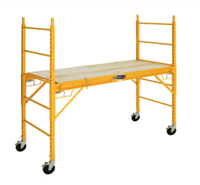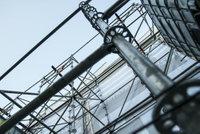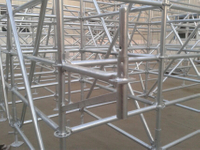Content Menu
● Understanding Cuplock Scaffolding
● Key Components of Cuplock Systems
● Why Cheap Cuplock Scaffolding Raises Safety Concerns
>> 1. Inferior Material Quality
>> 2. Compromised Manufacturing
>> 3. Missing or Non-Standard Parts
● Material Quality: The Foundation of Safety
>> Genuine vs. Cheap Cuplock Components
● Best Practices for Safe Cuplock Scaffolding Use
● Choosing a Reliable Supplier
● Conclusion
● FAQ
>> 1. How can I verify if my Cuplock scaffolding is genuine?
>> 2. What load capacity should I expect from compliant Cuplock systems?
>> 3. Are there legal consequences for using non-compliant scaffolding?
>> 4. Can I mix genuine and cheap Cuplock components?
>> 5. How often should I inspect cheap scaffolding?
Cuplock scaffolding is widely praised for its modular design, quick assembly, and structural stability. However, the growing availability of low-cost alternatives raises critical safety questions. While budget-friendly options may seem appealing, their use in construction projects demands careful evaluation of material quality, compliance with standards, and long-term reliability. This comprehensive guide examines the risks and realities of using cheap Cuplock scaffolding, supported by expert insights and actionable safety recommendations.
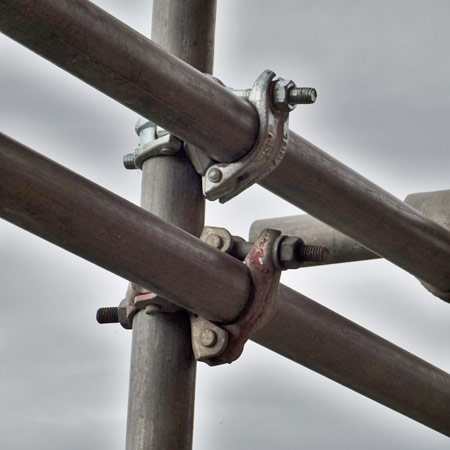
Understanding Cuplock Scaffolding
Cuplock scaffolding is a modular system comprising vertical standards with fixed cups and horizontal ledgers locked into place via sliding upper cups. Its key advantages include:
- Speed of Assembly: No bolts or welding required.
- Load Capacity: Supports up to 50 kN per leg in compliant systems.
- Versatility: Adaptable to curved structures, staircases, and high-rise projects.
The system's safety relies on precision engineering. Genuine Cuplock components meet standards like BS 1139 and EN 12811, ensuring uniform dimensions and load ratings.
Key Components of Cuplock Systems
| Component | Role in Safety | Risks in Cheap Systems |
| Vertical Standards | Bear vertical loads; cups align horizontals | Thin-walled tubes may buckle under load |
| Ledgers | Distribute horizontal forces | Poorly welded joints can snap |
| Cuplock Joints | Secure connections without bolts | Casting defects lead to slippage |
| Base Jacks | Provide stability on uneven ground | Weak adjusters cause tilting |
| Guardrails | Prevent falls | Flimsy rails bend or detach |
Why Cheap Cuplock Scaffolding Raises Safety Concerns
1. Inferior Material Quality
- Steel Grade: Cheap systems often use Q235 steel (yield strength 235 MPa) instead of Q355 (355 MPa), reducing load capacity by 30% .
- Wall Thickness: Non-compliant tubes may have walls as thin as 3.0 mm vs. the standard 3.2–4.5 mm, increasing buckling risk .
- Chemical Composition: Substandard steel may lack trace elements like chromium or molybdenum, accelerating corrosion and brittleness.
2. Compromised Manufacturing
- Welding Defects: Automated welding in genuine systems ensures consistency; cheap versions may have uneven or incomplete welds.
- Galvanization Gaps: Subpar coatings leave tubes vulnerable to rust, weakening structural integrity over time .
- Dimensional Inconsistencies: Poorly machined cups or ledgers result in loose connections, increasing collapse risks.
3. Missing or Non-Standard Parts
- Counterfeit systems often omit critical components like ledger blades or cup locks, forcing workers to improvise unsafe connections.
- Non-standard parts may not fit genuine systems, complicating repairs or upgrades.
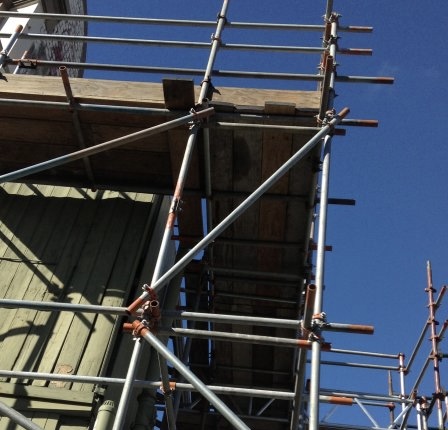
Material Quality: The Foundation of Safety
Genuine vs. Cheap Cuplock Components
| Feature | Genuine Cuplock | Cheap Cuplock |
| Steel Grade | Q355 (EN 10219-1 compliant) | Q235 (lower strength) |
| Wall Thickness | 3.2–4.5 mm (±0.1 mm tolerance) | 2.8–3.0 mm (variable) |
| Galvanization | Hot-dip, 85 µm coating | Electroplated, <50 µm |
| Load Capacity | 50 kN/leg | 20–35 kN/leg (unverified) |
Best Practices for Safe Cuplock Scaffolding Use
1. Buy Certified: Purchase from suppliers with EN 12811 or BS 1139 certifications.
2. Regular Inspections: Check for rust, deformation, and joint integrity weekly.
3. Train Workers: Ensure teams recognize substandard components.
4. Avoid Mixing Brands: Incompatible parts compromise structural integrity.
5. Document Inspections: Maintain logs to demonstrate compliance during audits.
Choosing a Reliable Supplier
- Verify Certifications: Ensure suppliers hold ISO 9001, SGS, or local equivalent certifications.
- Visit Facilities: Inspect manufacturing processes for automation and quality control.
- Check References: Contact previous clients to assess product longevity.
- Warranty Offers: Genuine suppliers typically provide 5–10 year warranties.
Conclusion
Cheap Cuplock scaffolding poses significant safety risks due to inferior materials, non-compliance with standards, and unpredictable load capacities. While cost savings are tempting, the potential for catastrophic failures, legal liabilities, and reputational damage far outweigh initial budget benefits. Always prioritize suppliers with verifiable certifications, and never compromise on material thickness or joint quality. By investing in genuine Cuplock systems and adhering to inspection protocols, construction firms ensure worker safety and project longevity.
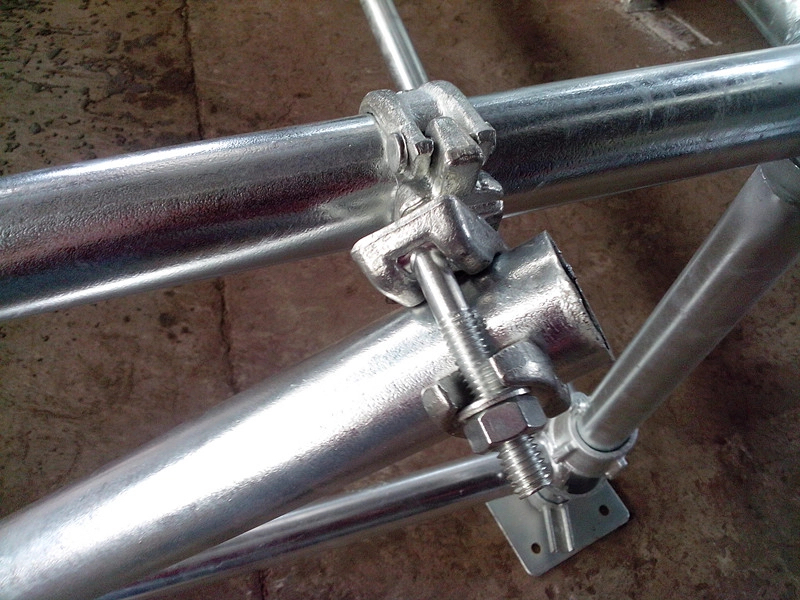
FAQ
1. How can I verify if my Cuplock scaffolding is genuine?
Check for stamped markings like BS 1139 or EN 12811, request mill test certificates, and measure wall thickness with calipers (≥3.2 mm).
2. What load capacity should I expect from compliant Cuplock systems?
Genuine systems support 50 kN per leg when properly installed. Cheap systems often fail at 20–35 kN.
3. Are there legal consequences for using non-compliant scaffolding?
Yes. Regulatory bodies like OSHA fine companies up to $14,502 per violation for unsafe scaffolding, with criminal charges possible in injury cases.
4. Can I mix genuine and cheap Cuplock components?
No. Incompatible dimensions or materials create weak points, increasing collapse risks.
5. How often should I inspect cheap scaffolding?
Daily. Focus on joint stability, rust spots, and tube deformation, which develop faster in low-quality systems.













